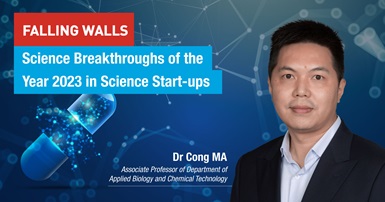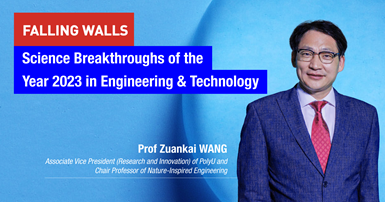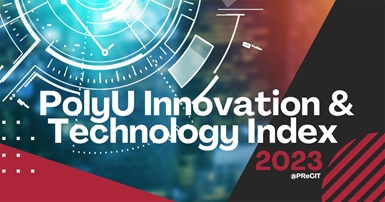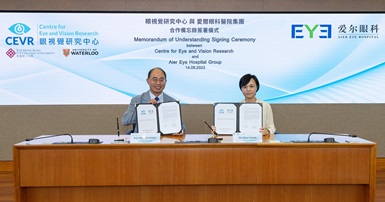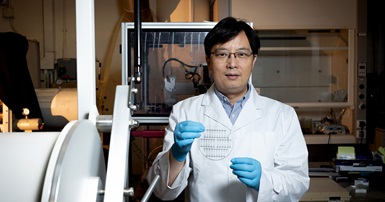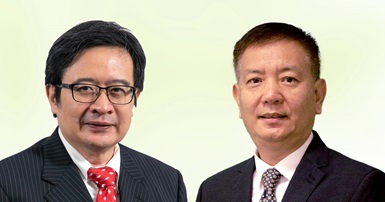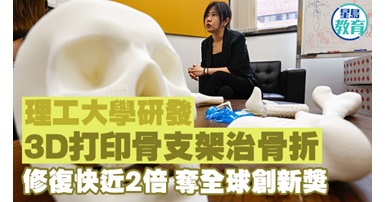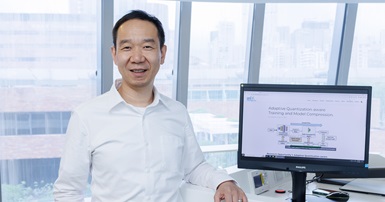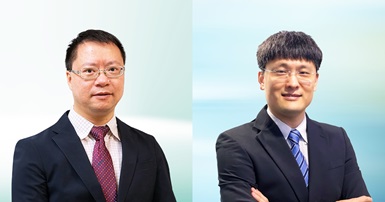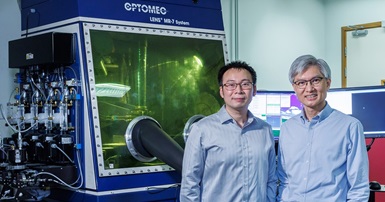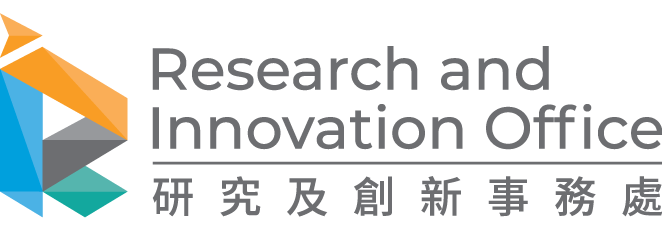Cultivating a holistic view of research impacts
Researchers need to take a holistic mindset on bringing the results from laboratory to society.
Computer scientists must remain constantly prepared for a wide spectrum of rapidly evolving paradigms and environments within computing networks and artificial intelligence (AI) technologies. Prof. Song GUO of Department of Computing at The Hong Kong Polytechnic University (PolyU) has fostered proactive teamwork to develop innovative research and impactful applications in the field of dynamic computing.
As Director of the Edge Intelligence Laboratory at PolyU, Prof. GUO has inspired a team of active researchers to investigate diversely, from the Internet of Things (IoT) to wearable devices and systems over ubiquitous mobiles, algorithms, deep learning, and edge computing. Prof. GUO always believes that talent developments and team efforts are crucial for research and constantly promoting a promising environment with diverse opportunities for growth, knowledge acquisition, and achievements.
“My consistent recognition as a highly cited researcher underscores our team’s influential contributions in the field,” said Prof. GUO, whose research in Edge-cloud AI is highly cited.
Individually, the paradigms of edge computing, cloud and AI are all rapidly evolving technologies that garner significant interest from academia and industry. If the cloud server centre functions as the brain, then edge computing is the nervous system connecting to various intelligent terminals throughout the body.
The number of edge devices is proliferating, with the generation of excessive amounts of data crucial for intelligent applications. In an era of the smart city and living environment, edge learning research is essential as a paradigm that complements cloud-based methods for big data analytics in the cloud-edge environment.
Edge-cloud AI
“Edge-cloud AI has emerged as a widely cited research field involving the collaboration of edge-side clients, networking facilities, and cloud-side servers. Our primary objective is to perform systematic research to design and implement efficient systems for Edge-cloud AI applications,” said Prof. GUO.
However, a comprehensive life-cycle optimisation is a key challenge to addressing various aspects of computing systems, such as edge AI risks, dynamic environments, on-device constraints and heterogeneous resources. In the previous research, these requirements were abstracted into a bottom-up hierarchy and followed by a comprehensive approach to designing the system from deployment to training, adaption, and governance perspectives.
The primary focus of research embraces four major aspects for developing efficient Edge-cloud AI systems:
Designing a collaborative training framework over heterogeneous edge environments
Offering a lightweight deployment engine for resource-constrained edge devices
Proposing fast adaptation mechanisms for evolutionary edge environments
Designing trustworthy governance technologies to mitigate various Edge AI risks.
Highly Cited
Deep learning is critical to applications of IoT by improving the efficiency of deployment and management of IoT, enhancing security and privacy protection, and enabling various smart usage. Respectively, federated learning is a decentralised approach to training machine learning models without exposing their private data.
Prof. GUO’s highly cited research, titled “Layer-Wised Model Aggregation for Personalised Federal Learning”, showed higher performance in collaborative learning while protecting data privacy. The study proposed a novel personalised federated learning training framework to optimise the personalised model aggregation of clients with heterogeneous data.
IoT generates large amounts of data at the network edge. Machine learning models are often built on these data to enable the detection, classification, and prediction of future events. However, it is often impossible to send all the IoT data to the central server for centralised model training due to network bandwidth, storage, and privacy concern.
Prof. GUO’s research, titled “A Learning-based Incentive Mechanism for Federated Learning”, was published in IEEE Internet of Things Journal in 2020. It studied the incentive mechanism for federated learning to motivate edge nodes to contribute model training. Notably, a deep reinforcement learning-based incentive mechanism was designed to determine the optimal pricing strategy for the parameter server and optimal training strategies for edge nodes.
For edge computing, Prof. GUO’s research designed a decentralised algorithm for computation offloading to enable users to independently choose their offloading decisions. The highly cited research, titled “A Deep Reinforcement Learning Based Offloading Game in Edge Computing”, was published in IEEE Transactions on Computers in 2020.
Practical applications
Leveraging the Edge-cloud AI research platform, Prof. GUO's team has successfully applied the findings to real-world applications. For instance, the smart health project, which deploys lightweight medical models on edge devices, precisely enables body posture analysis with 90% classification accuracy. This “Dr Body Scan” posture analysis system has become the first automated, all-in-one machine for accurate diagnosis and evaluation of human posture. It won the Hong Kong Information and Communications Technology (ICT) Awards 2021 for providing impactful solutions for social and business needs.
Another smart transportation project uses neural video enhancement techniques to address vulnerabilities in autonomous vehicles by taking hardware, software, network environment and real-time demands into account. It effectively leads to up to 20 times reduced traffic. Overall, these real-time video inference algorithms and neural video enhancement models provide solid foundations for Edge AI applications.
“We take pride in balancing academic publications and practical applications. Alongside our academic achievements, we have published two books and secured over eight patents related to Edge AI,” said Prof. GUO. These accomplishments vividly build the value of research on social and economic benefits and make the connection between academia and industry.
Collaboration with universities, hospitals, government, and charity organisations is essential for researchers with a proactive vision of real-world impacts. Also, international exchanges on global conferences participation and top-notch institutes visits are motivational activities to explore cutting-edge technology and gain in-depth knowledge.
Research Interests: Edge AI, Edge Computing, 6G, Big Data, Machine Learning, Distributed Systems, Mobile Computing
Highly Cited Researcher: 2020-2022 (Clarivate Analytics)
Selected Highly Cited Publications:
S. Guo, Y. Zhan Y., P. Li, J. Zhang, A Deep Reinforcement Learning based Offloading Game in Edge Computing, IEEE Transactions on Computers, vol. 69, issue 6, June 2020.
S. Guo, Y. Zhan, P. Li, Z. Qu, D. Zeng, A Learning-Based Incentive Mechanism for Federated Learning, IEEE Internet of Things Journal, vol. 7, issue 7, July 2020.
S. Guo, X. Ma, J. Zhang, W. Xu, Layer-Wised Model Aggregation for Personalized Federated Learning, Proceedings of the IEEE/CVF Conference on Computer Vision and Pattern Recognition, pp. 10092-10101, 2022.
Download Version
